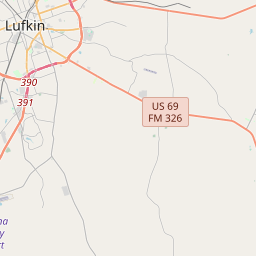Original Site of St. Cyprian's Episcopal Church
Historical marker location:






The first Episcopal service in Lufkin was held in 1893 by the Rev. George L. Crocket for the W. G. Garron and R. B. Shearer families. St. Mary's Mission was established in 1895 by the Rev. C. M. Beckwith, but the congregation did not have a permanent church building until 1906 when the structure on this site was erected and the name St. Cyprian's was adopted. The building was bricked in 1929 and later gutted by fire, after which the congregation moved to another location. St. Cyprian's original sanctuary stands today as Lufkin's oldest existing church building. (1983)
As one of the most visible programs of the Texas Historical Commission (THC), historical markers commemorate diverse topics in Texas history, including: the history and architecture of houses, commercial and public buildings, religious congregations, and military sites; events that changed the course of local and state history; and individuals who have made lasting contributions to the state, community organizations, and businesses.
The cattle industry played a significant role in the development of Texas, with cowboys driving cattle from Texas to railheads in Kansas during the late 1800s and early 1900s.
In the 19th century, the area that is now Angelina County found itself in the middle of the conflict between Spanish Texas and the newly-formed Republic of Mexico. As Mexico gained independence from Spain, the region became a part of the Mexican state of Coahuila y Tejas. This tumultuous period culminated in the Texas Revolution, during which Texas gained its independence from Mexico, leading to the formation of the Republic of Texas.
Angelina County was officially established in 1846, named after a Hainai Native American woman who had served as a guide and interpreter for Spanish and French expeditions in the area. The county experienced rapid growth in the late 19th and early 20th centuries due to the timber industry. The area's vast pine forests attracted logging and sawmill operations, which led to the establishment of several towns and the creation of jobs.
Over the years, Angelina County has diversified its economy beyond timber. The discovery of oil and natural gas in the early 20th century brought further economic growth and development to the region. Today, the county continues to thrive with a mix of industries, including healthcare, education, manufacturing, and agriculture. The county is also home to various recreational areas, including Lake Sam Rayburn and the Angelina National Forest, which attract visitors from near and far. Angelina County's rich history and thriving present make it a vibrant and dynamic part of Texas.
Angelina County Timeline
This timeline provides a condensed summary of the historical journey of Angelina County, Texas.
- 1805: The area that would become Angelina County is part of the disputed Neutral Ground between Spanish Texas and the United States.
- Early 19th Century: Native American tribes, including the Caddo, Cherokee, and Apache, populate the region.
- 1837: Angelina County is officially established from parts of Houston County and Nacogdoches County. It is named after a Delaware Indian girl, Angelina, who was married to a settler, who later became a local Native American agent.
- 1846: The first county seat, Marion, is established near the Neches River, but is later abandoned in favor of the more central Lufkin.
- Mid-19th Century: The county's economy relies on agriculture, particularly cotton production, as well as timber and sawmills.
- 1882: The Houston East and West Texas Railway is extended into Angelina County, boosting economic development and commerce.
- Early 20th Century: The discovery of oil deposits contributes to the county's growth and prosperity.
- 1927: Lufkin becomes the official county seat, replacing Homer.
- 20th Century: Angelina County experiences periods of economic growth and decline, influenced by various factors such as the Great Depression, the oil industry, and the timber industry.
- Today: Angelina County remains an important center for timber production, while also diversifying its economy with manufacturing, healthcare, and education sectors.